Mining
Type of resources
Available actions
Topics
Keywords
Contact for the resource
Provided by
Years
Formats
Representation types
Update frequencies
Scale
-
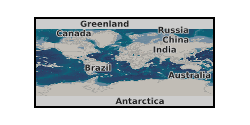
Old card index of quarries in England, Wales and Scotland dating mostly from 1939 to 1963: about 7000 cards, each referring to one quarry. England & Wales cards are arranged by BGS 1-inch (now 50k scale) geological sheet, Scottish cards by county. At best, cards indicate county, geol-sheet, rock type, name, grid reference, locality, owner, date of record and cross references to BGS samples.
-
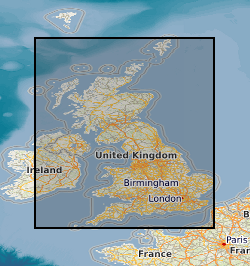
The data shows the extent of mining within Great Britain it was captured in 1990 by OVE ARUP on behalf of the Department of Environment as a series of paper maps and no updates have been carried out. The data has been converted to a digital format (ESRI Shapefile) by BGS in 1995. The original scale of the data was 1km square. The dataset has limited attribution indicating type i.e. metalliferous, rock, coal, deneholes (chalk), evaporites or ironstone, and whether definitive evidence was found. Although every effort has been made to attribute the digital data to the original maps some inconstancies may have arisen due to data conversion process.
-

**No longer exists**The dataset comprises the published annual reports of approximately 180 companies involved in mining or mining-related activities. The great majority are in English or are bilingual with English. A 5-year collection is maintained on a rolling basis, i.e. only the most recent 5 years' reports are retained. The dataset comprises the reports companies deemed to be the most important in minerals production world-wide. The collection is incomplete as many companies now distribute their annual reports via their web sites rather than send printed copies.
-

Mineral Occurrences These data constitute the mineral occurrences in Northern Ireland recorded in Geological Survey of Northern Ireland publications. This index will be updated periodically with the addition of exploration data released from confidentiality under the terms of the Mineral Development Act (NI) 1969. Further information on this data set is available from GSNI (Contact Mark Patton, e-mail: mark.patton@detini.gov.uk).
-

**has been incorporated into the main BGS Landslides database**The dataset results from a survey of the landslips in the South Wales Coalfield, conducted on contract for the Department of the Environment in 1977-81. A total of 579 landslips were identified from air photo interpretation and existing mapping. Each landslip was examined in the field and a catalogue compiled including data on location, description, classification, geological context, dimensions and activity. The data is also presented on c. 90 annotated field sheets at 1:10 000 scale and in other supporting documentation.
-

Data relating to project specific sites of investigation into fluid processes in landfills and mine sites.
-
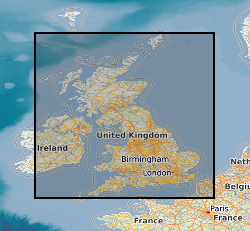
The 1km Hex Mining Hazard (Not Including Coal) v7 dataset shows areas of known underground mining (Not Including Coal), identified with an indication of the level of hazard associated for each site. The presence of former underground workings, particularly where shallow, may collapse and cause surface settlement which is used to identify potential hazard at each site. The rating is based on a Low (limited mining known to have occurred) to High (underground mining is known to have occurred) scale. The dataset covers areas of known underground working in Great Britain. The coverage is not comprehensive as areas with no evidence of underground working are unclassified. Underground extraction of minerals and rocks has taken place in Great Britain for more than 5000 years. This dataset draws together a range of diverse information; the geology, the primary constraint on distribution; additional information sourced from published literature and knowledge from BGS experts. Derived from the original MiningHazardNotIncludingCoalGB_v7 dataset, this layer generalises these data into a Hex grid format, with an effective hexagonal grid resolution of 2.6km coverage area (side length of 1km). The dataset was created to provide a comprehensive overview of Great Britain's long and complicated mining legacy. It provides essential information for planners and developers working in areas where former underground mine workings may have occurred. Also for anyone involved in the ownership or management of property, including developers, householders and local government.
-
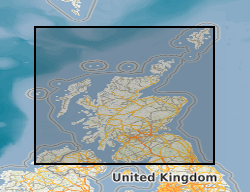
The Land Survey Plans collection of c.1,520 plans consists largely of mine plans acquired by the Survey, including 492 non-coal mine plans deposited by the National Coal Board 1984-87, and copies of mine plans derived from various sources including '6-inch reductions'. The collection also contains about 500 miscellaneous plans extracted from other Land Survey records in order to benefit from specialised systems of archival storage. The Survey's collection of Northern England mine plans are being added to the LSP collection. The collection supplements the Plans Of Abandoned Mines (Other than Coal & Oil Shale) in Scotland (NONCOALPLANSCO) providing an index to plans other than coal and oil shale for Scotland. Indexed on BGS Plans Database Index. Coal Authority hold some non-coal plans for Scotland. All non-confidential data held by NGRC(N) is available to users. Mainly coalfield areas of Central Scotland.
-

The dataset uses the outline of the mining hazard not including coal in Great Britain data but has been re-attributed to reflect the potential affect of underground drainage. It excludes areas of Coal mining as these are covered by the Coal Authority and therefore are not included in this dataset. It has been reattributed from the A-E rating scale indicating the increasing likelihood of an underground mining hazard to a 1-4 scale identifying the likelihood of susceptibility to infiltration. The data was created using expert knowledge to reattribute the original mining area polygons.
-
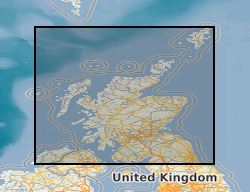
The collection includes colour microfilm aperture card copies of 7,170 plans of mine workings for coal and oil shale dating from 1872 onwards deposited on abandonment of a mine in compliance with the Coal Mines Regulation Act. An additional c.5,000 coal 'working' plans, mostly pre-dating 1872, formerly belonging to British Coal, have been added to the abandonment plan collection. The latter are held as black & white microfilm aperture cards. The collection includes plans of workings for other minerals, notably ironstone, where worked with coal. The microfilms are held on behalf of the Coal Authority who hold the original plans on behalf of the Health & Safety Executive (HSE). Original plans are held by the Coal Authority, Mansfield. No complete digital index held by BGS. An up to date finding aid is provided by the Coal Authority's paper 'Catalogue of Plans of Abandoned Mines'. The collection is believed to be fairly complete for mines abandoned since the 1872 Act. Plans were added from the British Coal plan collections to fill gaps in holdings, particularly for mines abandoned prior to 1872. Relates to coalfield areas of Central Scotland.
 NERC Data Catalogue Service
NERC Data Catalogue Service